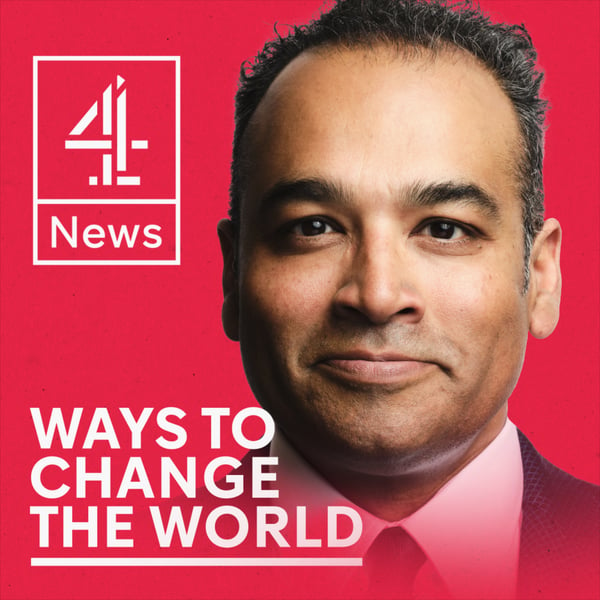Suzanne Simmard on fungal networks, ‘Mother’ trees, and restoring our forests
Ways to Change the World with Krishnan Guru-Murthy
Channel 4 News
4.6 • 1.1K Ratings
🗓️ 19 May 2023
⏱️ 38 minutes
🧾️ Download transcript
Summary
When Suzanne Simard discovered that trees could communicate through underground networks of fungi in 1997, her work was largely dismissed.But today, as a Professor of Forest Ecology at the University of British Columbia, her work is recognised as pioneering within the scientific community.
In her book ‘Finding Mother Tree’, she explores how forests have ‘hub trees’ that play an important role in plant communication.In today’s episode of Ways to Change the World, Suzanne looks back at her work, and explains to Krishnan Guru-Murthy how it could help protect forests from climate change.
Produced by Imahn Robertson and Annie La Vespa.
Transcript
Click on a timestamp to play from that location
| 0:00.0 | Hello and welcome to Ways to Change the World. I'm Christian Gary Murphy and this is the podcast |
| 0:04.7 | in which we talk to extraordinary people about the big ideas in their lives and the events that |
| 0:09.1 | have helped shape them. My guest this week has changed the way we think about trees. |
| 0:15.2 | Professor Susan Semard is Professor of Forest Ecology at the University of British Columbia |
| 0:21.1 | in Canada. She is author of the book Finding the Mother Tree and her work has influenced |
| 0:29.6 | other scientists but modern culture, popular art, James Cameron, the tree in the in the movie Avatar, |
| 0:38.0 | the Tree of Souls. A lot of that comes from her work which tells us that trees are not just |
| 0:45.1 | singular things that you can chop down with no consequence but communicate, help each other, |
| 0:50.8 | maybe even recognise their own offspring. Susan, welcome. Thank you. And you're here actually |
| 0:56.8 | because you're collecting the Q International Medal in London so congratulations on that. |
| 1:00.4 | Thank you. Thank you. It's a great honour. I mean, first of all, explain in better terms than |
| 1:04.8 | I just did what your work is really about. Well, I look at how connection is important in |
| 1:11.7 | forest. So like you said, we used to think of trees as just individuals that, you know, try to get |
| 1:18.2 | their needs met by competing for light water nutrients and trees with long known also form |
| 1:24.4 | symbiosis with fungi, a group of micro, fungi called mycorrhizal fungi. And this has been known |
| 1:31.0 | for quite a long time but it was here in the UK that Sir David discovered in the laboratory that |
| 1:36.9 | little seedlings could actually be connected together by these mycorrhizal fungi that they could |
| 1:41.7 | trade actually carbon. And so what I did as I asked, does this happen in the forests of Canada? |
| 1:48.4 | And in Canada, we have big forests, you know, big old growth forests with trees that can be 50 meters |
| 1:54.8 | tall. And I thought, wow, I wonder if this is also occurring in our forests. So I did some field |
| 2:01.1 | work, field studies in my doctoral research. And I discovered that actually these trees in these |
| 2:07.3 | forests will actually send carbon back and forth between them through these mycorrhizal networks |
... |
Please login to see the full transcript.
Disclaimer: The podcast and artwork embedded on this page are from Channel 4 News, and are the property of its owner and not affiliated with or endorsed by Tapesearch.
Generated transcripts are the property of Channel 4 News and are distributed freely under the Fair Use doctrine. Transcripts generated by Tapesearch are not guaranteed to be accurate.
Copyright © Tapesearch 2025.

